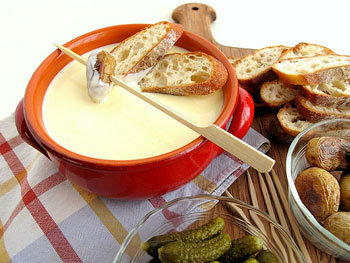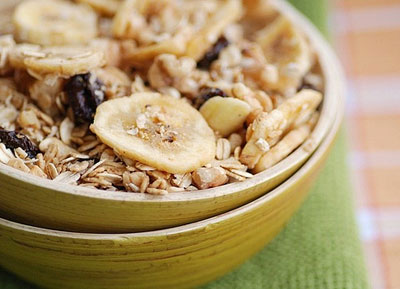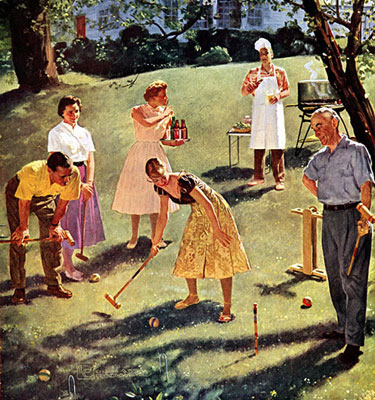 I love beans. There I said it. I mean, don't you love them too? Beans can stretch any meal far beyond the usual menu ideas. There are countless sauces and toppings that can be incorporated with beans and served over rice and pasta. Let's not mention the affordability of this very fine staple.
I love beans. There I said it. I mean, don't you love them too? Beans can stretch any meal far beyond the usual menu ideas. There are countless sauces and toppings that can be incorporated with beans and served over rice and pasta. Let's not mention the affordability of this very fine staple.
I do suppose there are those who suffer lots of intestinal-distress when consuming beans, luckily, I am not one of them. Too much information? Maybe.
Anyway, these white beans in tomato sauce, scented with rosemary, are even better a day or two after cooking. They make a great side dish and are easily reheated. My favorite way to eat them is with a generous helping of freshly, grated Parmesan cheese. It melts all over the warm beans and it's just fantastic.
Retro Recipes and Traditional Fare
Retro Recipes and Traditional Fare
Fonduta
 With the blustery weather the Northern hemisphere is having right now, there are plenty of reasons to stay in and gather with family over holiday food. And for safety's sake, I just hope that is what most people are doing. There are many dishes that create a sense of togetherness, but none is as famous as fondue. This dish of melted cheese originates from the Alps. The Swiss popularized and designated it a national dish in the 1930s. It eventually crossed the pond and became extremely popular in suburban America during the 1960s. There are also French and Italian versions, like Fonduta, as it's called in Italy.
With the blustery weather the Northern hemisphere is having right now, there are plenty of reasons to stay in and gather with family over holiday food. And for safety's sake, I just hope that is what most people are doing. There are many dishes that create a sense of togetherness, but none is as famous as fondue. This dish of melted cheese originates from the Alps. The Swiss popularized and designated it a national dish in the 1930s. It eventually crossed the pond and became extremely popular in suburban America during the 1960s. There are also French and Italian versions, like Fonduta, as it's called in Italy.
Fonduta is a specialty of Piedmont and Valle d’Aosta. It is made with fontina, a young cow's milk cheese that melts much like mozzarella. Its taste is similar to other Alpine cheeses, like Gruyère and Emmental from Switzerland. The big difference between Swiss fondue and fonduta is that the Italian recipe does not include wine, garlic, or cornstarch as thickener. Instead fonduta is made with butter, milk, and egg yolks as thickener. It comes together much like custard and is made in a bain-marie, a double boiler. The final dish is richly flavored and silken. It's ideal for a communal gathering of family or a New Year's Eve party with friends. Just add a roaring fire, and complete the Alpine feel.
Gratinineed Cucumbers
 I think it's an American consensus that any dish covered with cheese is better. Steamed broccoli drowned in bright yellow processed cheese comes to mind. But what dinner table in America is without scalloped or gratinéed potatoes? Too bad we Americans can't claim the idea as our own invention. The French came up with gratiné, the method of topping ingredients with breadcrumbs, butter, and cheese and baking under a broiler. Potatoes are the most popular cooked in this method, but other vegetables also deserve this special treatment. Cucumbers, a vegetable that really never gets cooked, make the perfect gratiné.
I think it's an American consensus that any dish covered with cheese is better. Steamed broccoli drowned in bright yellow processed cheese comes to mind. But what dinner table in America is without scalloped or gratinéed potatoes? Too bad we Americans can't claim the idea as our own invention. The French came up with gratiné, the method of topping ingredients with breadcrumbs, butter, and cheese and baking under a broiler. Potatoes are the most popular cooked in this method, but other vegetables also deserve this special treatment. Cucumbers, a vegetable that really never gets cooked, make the perfect gratiné.
Why cucumbers? In Mastering the Art of French Cooking, Julia Child offers up her recipe for baked cucumbers and in Julie & Julia, Julie Powell discovers the deliciousness of Julia's baked cucumbers. While reading these books in anticipation of the movie, I couldn't keep cucumbers out of my mind. I just was unable to fathom cooked or baked cucumbers. Then on an episode of Julia and Jacques on PBS, I saw Jacques Pépin sauté cucumbers to serve alongside fish. So I had to try preparing something with cucumbers for myself.
Chicken Paprikash
 It's well known that paprika is the famous spice of Hungary. What I think most people don't realize is that the red powder is made from ripened peppers also called paprika. The word paprika means pepper in Hungarian, and I don't mean peppercorns, but rather the fruit or vegetable, depending on how you look at it. Hungarian sweet peppers are typically pale yellow to pale green in color when they are fresh. They can be eaten raw or cooked into many recipes. But when they ripen to bright red, they are dried and ground into the fine red powder known as paprika or what I like to call Hungarian gold.
It's well known that paprika is the famous spice of Hungary. What I think most people don't realize is that the red powder is made from ripened peppers also called paprika. The word paprika means pepper in Hungarian, and I don't mean peppercorns, but rather the fruit or vegetable, depending on how you look at it. Hungarian sweet peppers are typically pale yellow to pale green in color when they are fresh. They can be eaten raw or cooked into many recipes. But when they ripen to bright red, they are dried and ground into the fine red powder known as paprika or what I like to call Hungarian gold.
Hungarian paprika (pronounced puh-pri-ka) is available in sweet, hot, and everything in between, with eight varieties altogether. Sweet paprika has a deeper red color whereas hot paprika is more rusty in color. The signature dish most famous for using paprika is chicken paprikash, a stew of chicken with an onion sauce richly colored and flavored with paprika. I grew up on paprikás csirke, as it is known in Hungarian. It is my comfort food, and that's exactly what it is for so many Hungarians and Hungarian-Americans. I consider it my favorite home-cooked dish. And, of course, no recipe rivals my mother's.
Easy Homemade Crunchy Maple Walnut Granola
 If I say, "She's so granola," you know exactly what I mean -- she's a tree-hugging, free-spirited, hemp-wearing woman with long graying hair who wears her well-worn Birkenstocks to walk to the local co-op where she buys only fair-trade goods.
If I say, "She's so granola," you know exactly what I mean -- she's a tree-hugging, free-spirited, hemp-wearing woman with long graying hair who wears her well-worn Birkenstocks to walk to the local co-op where she buys only fair-trade goods.
Does that mean that a short-haired, Anthrolpologie-wearing, Cosmo-drinking girl with a 401K like me can't be "granola"? Cause I eat a lot of it.
I don't buy it at the local co-op; I make my own, while wearing high heels. Making homemade granola is easy and allows you to control the fat, sugar, and calorie content. It's also less expensive. Don't pay $5.00/pound for pre-made granola when you can buy oats for 79 cents a pound.
My current favorite is Easy Homemade Crunchy Maple Walnut Granola, a hearty maple-coated granola loaded with clusters of sticky walnuts and coconut, crisp banana chips, and tart cherries. I know it's expensive, but you have to use pure maple syrup.
Recently someone said to me, "You're so Mad Men in that dress." Hah. Little do they know I'm so granola.
More Articles ...
Welcome to the new One for the Table ...
Our Home Page will be different each time you arrive.
We're sure you'll find something to pique your interest...


